Hello, two-legged readers, from Lucinda the literate cat. I want to discuss with you the subject of cat domestication. I’ve reviewed the evidence and truly believe that cats domesticated themselves. In this post, I will offer background information and my reasons for this belief.
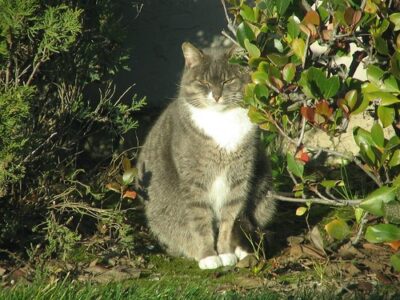
Yes, we cats who live in your homes have our own reasons to be thankful, but getting here certainly was not always an easy road for us. Since the time when we first made the decision to move in with you, we have been worshipped, tortured, thrown in fires, left out in the cold, gone to our graves unloved.
Yet we persevere. We are stubborn and courageous, and have finally been given a proper place as part of your family, once you accepted us into your homes and hearts.
Why did we decide to move in with you? Let’s consider our other options. There still remain many small species of the cat family who have not shown interest in domestication. That’s because these various cat species have found their own ways to adapt to their environment.
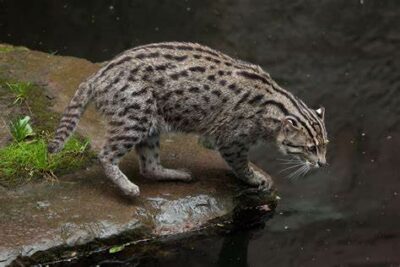
Your scientists have shown that all of us cats have many genetic similarities, yet we develop in certain ways depending on where we live. For example, the fishing cat chooses to remain a feline that hunts for prey underwater. You wouldn’t catch me trying such a thing!
To make this way to gather food possible, this cat has developed the ability to smell prey while under water — a trait not common in mammals in general. Because the fishing cat has chosen this lifestyle, that sense of smell has developed to allow such a strange mode of hunting.
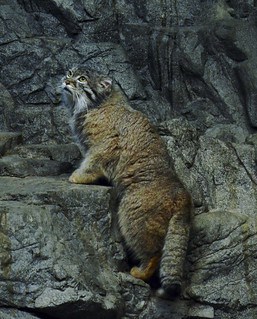
Next, look at Pallas’s cat — a small cat who has an incredibly dense coat of fur. This cat lives in a very cold environment and thus needs all that fur to keep out the cold. CCL (Cantankerous Cat Lady) says a friend recently showed her a short video of the Pallas’s cat.
In it, the cat sat on his thick, furry tail, creating a heating pad to keep his hind quarters warm. Where the tail extended out in front, he placed his paws on it, thus warming them as well. Now, that’s what I call using resources! I might try that trick, some cold, wintry night.
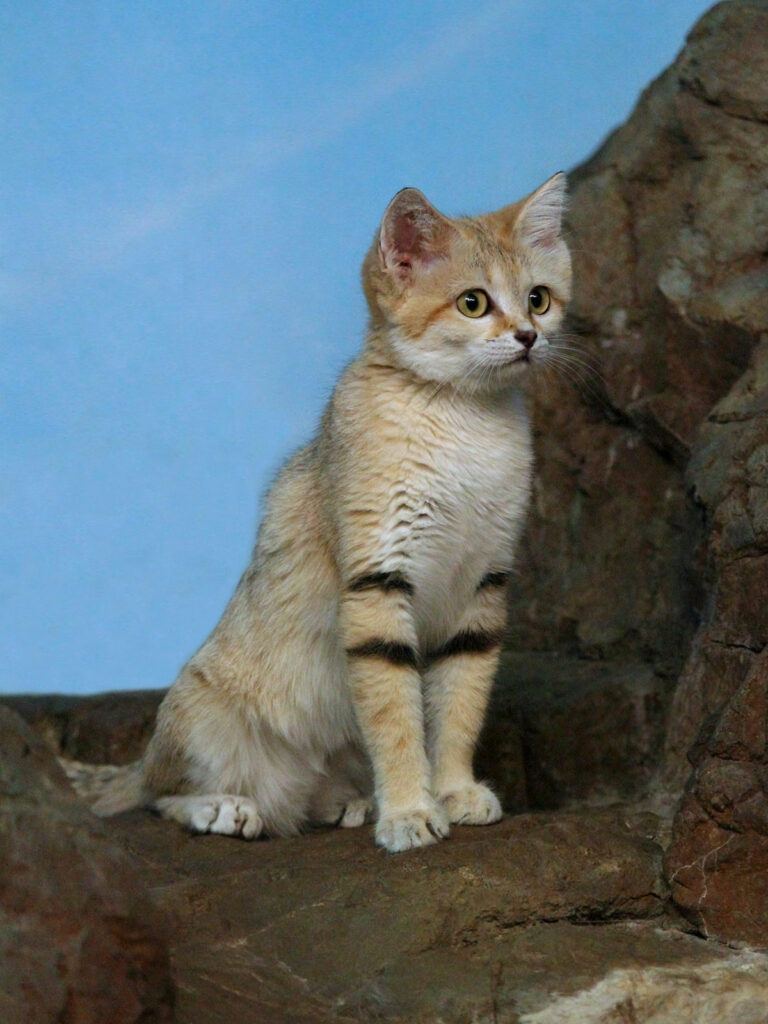
Or, consider the sand cat. This very small cat lives in the dry, hot desert. She has developed into a creature who can go for days without water, as she rarely gets a chance to drink. She is quite ferocious, and gets all the moisture she needs from the prey she kills.
Again, not for me! I’d really miss my kitty water fountain or the gravy that often gets mixed in with my canned food.
So, why did some of us decided to travel the route of domestication? Most of those of us who did so are descendants of the African wildcat. We first discovered the pleasures of domestication some 8,000 to 10,000 years ago in the area of Mesopotamia.
Here, you two-leggeds had become farmers instead of hunting for food. You grew great amounts of grain and stored them for future use. Mice, rats, snakes, and perhaps other small creatures found these supplies of stored food and took advantage of a free lunch.
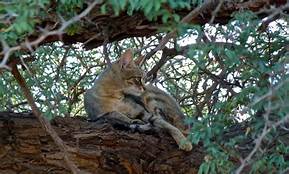
We cats, needing our own supply of food, feasted on the creatures stealing the grain. Thus, we provided a very valuable service for the farmers, as we protected their food supply. Soon, they developed a need for us, and encouraged us to remain as permanent members of the community.
We received invitations into their homes, where we found warmth and a safe, sheltered place to stay. Eventually, we allowed them to touch us and found their fingers could give us great pleasure, so we rewarded them with our lovely purrs. If they were good to us, we decided to become permanent residents.
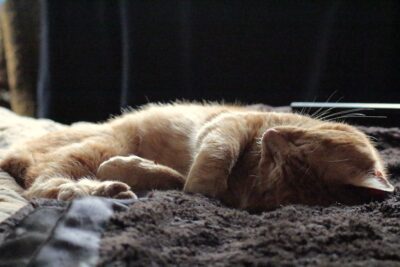
We each gave something to the other, and the satisfaction of our separate needs created advantages for us both. We cats are opportunists, and I can certainly understand why we made our decision to stick around and share the wealth.
Mesopotamia became one of the first spots where we decided to accept domestication. Another early place was ancient Egypt. Here, two-leggeds tended to elevate a variety of other creatures to the status of god or goddess. When we became valuable to them, they did the same to us.
Ancient Egypt represents perhaps the apex of our worldly accomplishments. Neither before or since have we been given such status. Why, a two-legged in ancient Egypt could be sentenced to death if he killed a cat! Now, that I’d call an extreme case of life insurance and job security.
Things were not always so good, and as many of you know, in what’s called the Middle Ages, your church denounced us as tools of the devil, and treated us accordingly. It makes my fur ripple to think of the horrid things you did to us. Many of us lost our lives in horrible ways.

However, courageous and stubborn, we have remained steadfast to our beliefs, and finally we are finding a world much more to our liking. Pockets of misinformation and abusive treatment remain, but we have had the courage to believe that domestication is still our way of life.
Therefore, we still look to you two-leggeds as partners and benefactors. In return, we give love and caring, we entertain you with our happy antics, and we purr to relieve your stress and to make sure you know we care. Believe in us and we will believe in you!
Reference used for this post: petmd.com/cat/behavior/history-cats-look-feline-domestication

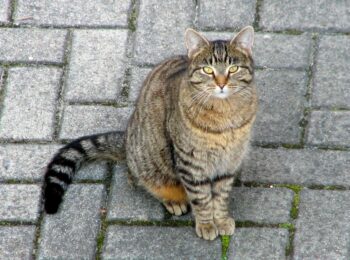
This is such an enjoyable essay! I did know of some of the small wild cats who did not choose domestication, but you added so much more. I was particularly delighted with the strategy of the Pallas’s Cat (what a name!) to warm his paws by sitting on his magnificent tail. Wow!
You know, I read an article that said cats have no conscious control over their tails. Tell that to anybody who has enjoyed receiving the “fur mustache” (this is when a cat purposely drags his tail under your nose to indicate that he approves of you).
Have you done an article on cat’s tails? It would be fascinating!
Glad you liked the post, Mary! I had fun writing it.
Good idea — a tale about tails. I’ll look into it.